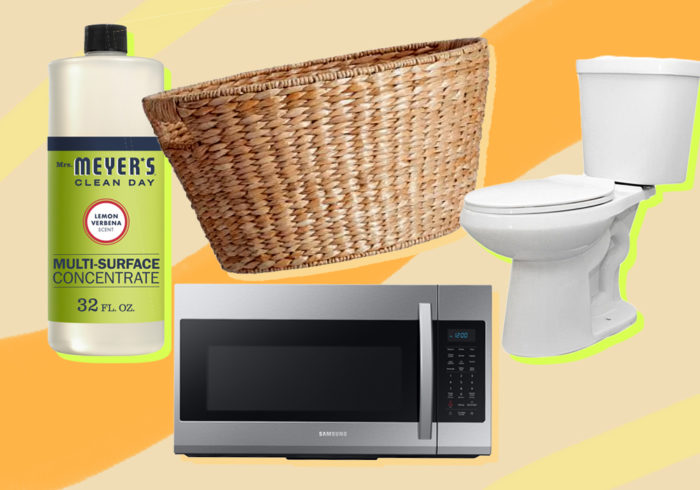7 Money Rules Every Restaurant Addict Needs To Know
I love restaurants. I love the whole experience — the good lighting, the friendly server, the thoughtful menu (which I read approximately four times online before going out, then once at the restaurant itself). I love food, from the light appetizer to the rich, stick-to-the-spoon dessert. I love perfectly-cooked meats and roasted vegetables and everything whipped, sautéed, or covered with bubbly cheese. I love the shape of duck confit, the sound of a crab being cracked open, and the steam that comes up from a little pocket of foil that something has been roasted in. I love wine, and the sound of a new bottle being opened next to our table. I love a pre-dinner cocktail with little nibbly things, and a nightcap in a tiny glass with the owner of a favorite neighborhood spot.
I’ve never been the kind of girl to spend hundreds of dollars on a whim in a downtown boutique, I’ve never particularly loved trying on new clothes, and the phrase “It Bag” inspires nothing in me besides a mild feeling of nausea. And while I do enjoy pretty things, in my home and in my wardrobe, I’ve always bought them in moderation, and the joy that they bring is limited. There are only so many throw pillows I can buy, so many strappy sandals I can own, and beyond the one or two that I really like, the rest is just superfluous. And frankly, if I have that money leftover, I’d much rather spend it on a good night out. I’d much rather have the beef carpaccio and endive salad with a nice glass of red and a few hours of good conversation than a new handbag, any day of the week.
But this love of going out — this falsely-reassuring desire to spend on “experiences” rather than “things” — is terrible on the bank account. Not even counting travel (a passion that tends to go hand-in-hand with the love of trying new foods and places), just a moderate life of dining and drinking out can add up to hundreds or thousands of dollars a month. On our very worst month, my boyfriend and I managed to spend nearly 3,000 dollars on going out with our common card, and it prompted a serious lifestyle change, part of which manifested in this very blog. But it wasn’t hard to do! Yes, looking back, the number is significant, but I don’t recall that month being particularly debaucherous. We simply went out to a few more restaurants at higher price points, paid for a few more rounds, got a few extra bottles, and found ourselves 3,000 dollars poorer.
Since then, I’ve become much better about dining expenses, and keep things in the medium-low hundreds. (Part of this is because of my weight loss journey, which basically prohibits too much dining out, but it’s also a conscious financial effort.) And in order to really reduce the amount I’ll spend on going out, I’ve taken the following steps:
1. I remember that takeout is still a restaurant. I used to look at “Seamless” and “going out to eat” as two very different things, but that is ridiculous. Aside from the slightly lower tip (which the delivery fee partially makes up for), you’re basically paying the same as you would in a restaurant for this food. If you start looking at your restaurant budget as including ANYTHING from a restaurant, takeout or dine-in, you will really start having to break down what is important. I now rarely order takeout, and to me, it counts as a meal out. I bought a few things at the grocery store — frozen white pizza, the supplies for a quick stir-fry — to combat my takeout desires when they hit, and it is usually more than enough to dissuade the money-and-MSG mistake.
2. I suggest lunches instead of dinners. For people I’m looking to catch up with/have a work thing with, I recommend lunch instead of an after-work thing because a) no drinking, and b) lunch specials. As a self-employed gal, unless I’m being taken out, there is no company card, and the catching-up-with-friends lunches are something I cannot expense. The same sushi meal that is 10 bucks at noon (including sides and an appetizer) would be at least twice that in the evening, and involve wine. It’s just not worth it.
3. I drink a max of twice per week now. My random weekday meals do not include a glass of wine, and I don’t stop for a drink with friends (but propose walks instead, if I can). Usually one of those two drinking nights is at home, so it leaves only one night at a restaurant with alcohol, which is where a lot of the financial damage can be done when dining out. I no longer feel compelled to order that drink just because I can, and definitely not a fancy cocktail.
4. I have gotten to know the happy hour landscape intimately. I live in New York, which means there are way too many amazing happy hour deals to not be taking advantage of them. I now have a few go-to spots for nights out that I always recommend to friends, and all of them have amazing deals that will easily cut a night out’s cost in half. Yes, maybe afterwards you can go for one drink at a swanky place, but there is no reason to spend your whole night downing $15 dollar cocktails just because you can.
5. I treat myself when on vacation. Unless I’m going for a long trip somewhere where eating out a lot would be unsustainable, I treat little weekend jaunts as a time to relax and have fun. This past weekend for croquet in Annapolis, Lauren and I had three days and just enjoyed ourselves. We went out, had drinks when we want to, and spent more than we normally would. And yes, we spent. But now that I’m back, I feel invigorated to have a weekend of clean, simple eating at home, and a quiet weekend in. Allowing yourself those moments of indulgence is important to being balanced the rest of the time. If I’m obsessing while I’m supposed to be relaxing, I’m going to come home and immediately want to treat myself again.
6. Treat some things as a meal, and some things as a taste. I’m one of those people who needs to end their meals on a sweet note, which often leads me to ordering a dessert for myself that I can never finish (and frankly, wouldn’t want to, given how heavy they often are). So I’ve found that it’s way smarter to order one dessert for the table with a few spoons, and let everyone have a few bites. It’s the perfect way to enjoy the flavor and end on that sweet note while saving serious money. And for appetizers, I always look for something everyone can share, like a cheese plate or a finger food. Having everyone order an individual app or dessert is an easy way to spend a ton more money while not really enjoying the meal that much more, because with those things, a few bites is all you really need. Your main course should be viewed as the thing that you came to eat in large quantities.
7. I only eat half, religiously, and supplement my leftovers with veggies. I was always a big only-eat-half gal, and having a lunch or dinner of restaurant leftovers is one of the most beautiful things to look forward to in a day. But the key, I’ve found, to making these meals really last and be filling (and somewhat healthy) is to supplement your leftovers with veggies. I now look at my trip to a restaurant as two big, filling meals for the price of one, and I simply add a bag of frozen broccoli or other veg to whatever I’m heating up, and maybe lightly season it if there isn’t enough sauce to go around. It’s delicious in everything from stir-fry to pasta to chicken and potatoes, and leaves you way more full while upping the health factor. And instead of taking home a little extra that will basically serve as a snack, you’ve managed to transform your indulgent meal into two really satisfying ones.
When it comes to restaurants and going out, I have a really hard time just setting a dollar budget and following it. Instead, I find that it’s more effective (and sane) to make general rules around how I eat and strive to be smarter each passing month. I’ve noticed my monthly spending in this category going down steadily, and I no longer have the same habits I once did, whether it’s ordering an appetizer for myself or turning to Seamless when I’m too lazy to cook.
Like any diet, a financial diet is not about radical shifts but gradual and sustainable lifestyle changes. And for me, changing my habits around going out have been the hardest to implement, but the most rewarding to see progress in. Because there is nothing better after a long week of eating healthily and cheaply at home than looking forward to your one big meal out of the week, where you know that you can really enjoy yourself, because after years of treating yourself at basically every meal, you’re finally living a balanced culinary life.
Image via Pexels





